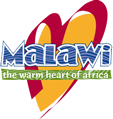Population
Malawi officially the Republic of Malawi, is a landlocked country in Southeastern Africa that was formerly known as Nyasaland. It is bordered by Zambia to the west, Tanzania to the north and northeast, and Mozambique to the east, south and southwest. Malawi spans over 118,484 km2 (45,747 sq mi) and has an estimated population of 19,431,566 (as of January 2021).
Malawi’s capital (and largest city) is Lilongwe. Its second-largest is Blantyre, its third-largest is Mzuzu and its fourth-largest is its former capital, Zomba. The name Malawi comes from the Maravi, an old name for the Chewa people who inhabit the area. The country is nicknamed “The Warm Heart of Africa” because of the friendliness of its people.
Climate
There are two main seasons—the dry season, which lasts from May to October, and the wet season, which lasts from November to April. Temperatures vary seasonally, and they tend to decrease on average with increasing elevation. Nsanje, in the Shire River valley, has a mean July temperature in the high 60s F (low 20s C) and an October mean in the mid-80s F (high 20s C), while Dedza, which lies at an elevation of more than 5,000 feet (1,500 metres), has a July mean in the high 50s F (mid-10s C) and an October mean in the high 60s F (low 20s C).
On the Nyika Plateau and on the upper levels of the Mulanje massif, frosts are not uncommon in July. Annual precipitation levels are highest over parts of the northern highlands and on the Sapitwa peak of the Mulanje massif, where they are about 90 inches (2,300 mm); they are lowest in the lower Shire valley, where they range from 25 to 35 inches (650 to 900 mm).
Language
Ten major ethnic groups are historically associated with modern Malawi—the Chewa, Nyanja, Lomwe, Yao, Tumbuka, Sena, Tonga, Ngoni, Ngonde, and the Lambya/Nyiha. All the African languages spoken are Bantu languages. From 1968 to 1994, Chewa was the only national language; it is now one of the numerous languages used in print and broadcast media and is spoken by a majority of the population.
In 1996 government policy indicated that education in grades 1–4 would be provided in the students’ mother tongue or vernacular language; from grade 5, the medium of instruction would be English, which, though understood by less than one-fifth of the population at independence in 1964, continues to be used widely in business, administrative and judicial matters, higher education, and elsewhere. Other major languages include Lomwe, Yao, and Tumbuka.
